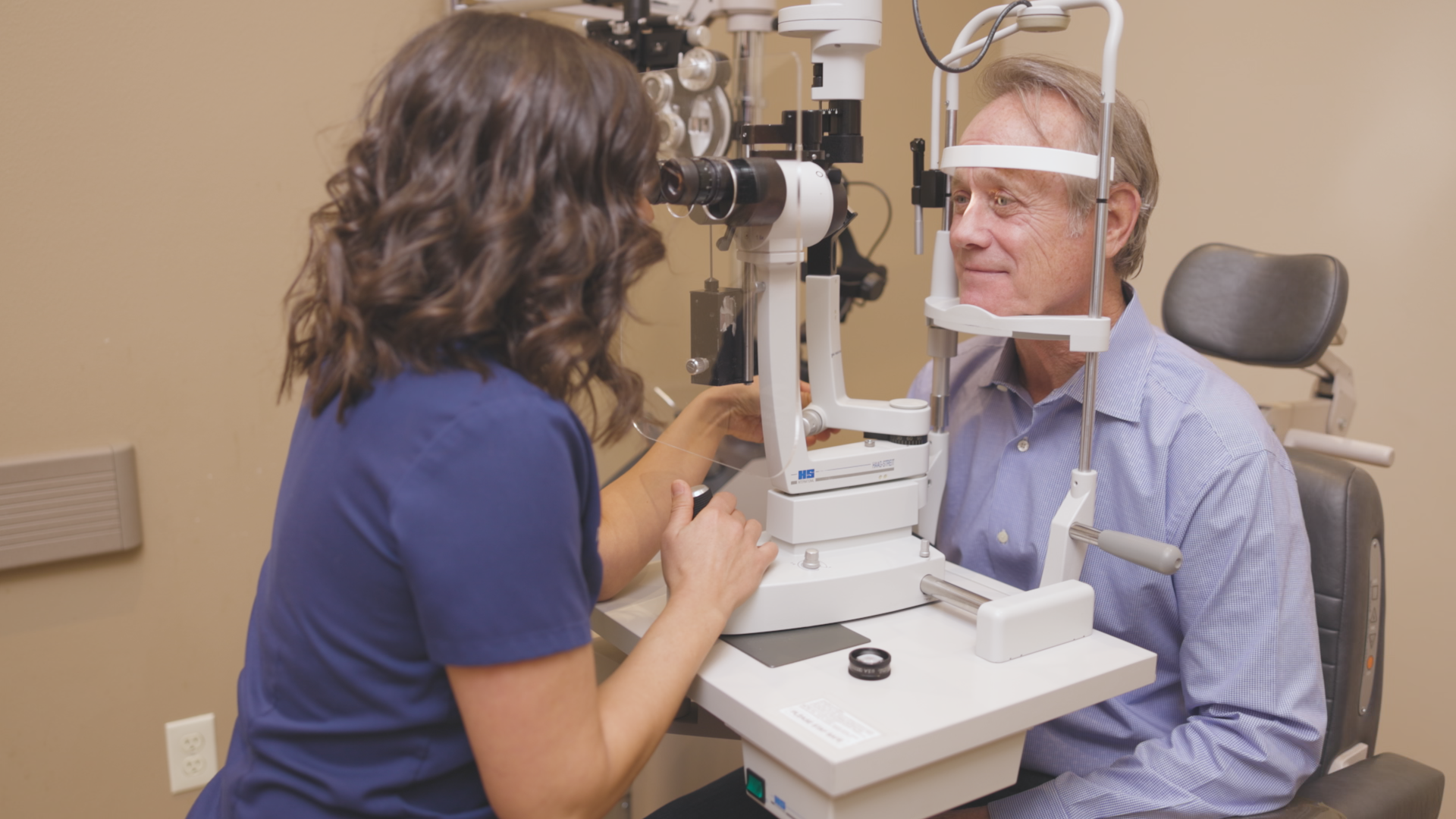Why Picking an Eye Doctor Optometrist is Necessary for Your Eyes
Why Picking an Eye Doctor Optometrist is Necessary for Your Eyes
Blog Article
Exploring the most up to date Technical Improvements in Optometry and What They Mean for Eye Doctors
In the ever-evolving area of optometry, current technical advancements are improving exactly how experts come close to eye care. From the precision of Optical Comprehensibility Tomography to the nuanced insights supplied by AI-driven analysis devices, these innovations are setting new standards in individual assessment and therapy. Teleoptometry is poised to redefine accessibility, making sure that experience goes beyond geographical constraints. As these improvements penetrate the technique, optometrists are confronted with the difficulty of embracing these tools to improve individual end results. Yet, the question continues to be: exactly how will these technological shifts redefine the functions and responsibilities within the career?
Innovations in Diagnostic Devices
Advancing the area of optometry, advancements in diagnostic tools have actually transformed the way eye treatment experts evaluate and detect ocular problems and visual impairments. The past years has seen substantial technological developments, allowing even more thorough and precise evaluations. Optical Comprehensibility Tomography (OCT), for instance, gives high-resolution cross-sectional photos of the retina, enabling for the very early discovery of conditions such as glaucoma and age-related macular degeneration. This non-invasive imaging strategy has come to be indispensable in modern optometric practice.
An additional secret advancement is the introduction of sophisticated corneal topography systems, which map the surface area curvature of the cornea with precision. These devices are particularly useful for suitable contact lenses and identifying corneal disorders. Moreover, digital retinal imaging has changed conventional ophthalmoscopy, using thorough, breathtaking sights of the retina that facilitate thorough visual evaluations.
The growth of wavefront aberrometry has actually also been crucial, enabling the evaluation of refractive errors with unequaled accuracy (Optometrist Chino). This innovation aids in personalizing rehabilitative lenses and boosting medical outcomes for refractive surgeries. Collectively, these diagnostic advancements encourage optometrists to provide remarkable person treatment, guaranteeing early treatment and customized therapy approaches, ultimately boosting visual wellness outcomes
AI in Individual Management
Building on the structure of cutting-edge diagnostic tools, the incorporation of synthetic knowledge (AI) in patient management stands for a transformative jump for optometry. AI systems are increasingly employed to improve effectiveness, accuracy, and customization in client treatment. By examining vast amounts of information, AI can recognize patterns and forecast potential eye conditions, making it possible for optometrists to tailor treatments better. This capability is vital in handling chronic eye conditions such as glaucoma and diabetic person retinopathy, where very early discovery and continual surveillance are vital.
In addition, AI-driven systems assist in structured patient communications and administrative processes. Automated scheduling, virtual consultations, and customized follow-up plans not only enhance client fulfillment however also maximize time administration for specialists. These systems can triage clients based upon the seriousness of their problems, making certain that those in crucial need obtain timely focus.
Furthermore, AI enhances decision-making by offering optometrists with evidence-based referrals and therapy paths. By incorporating data from electronic health and wellness records, AI devices use insights that educate scientific choices, reducing the danger of errors and boosting patient results. As AI remains to advance, its role in patient management will likely increase, reshaping the landscape of optometric treatment.
Advances in Retinal Imaging
In the realm of optometry, retinal imaging has witnessed impressive technological developments that are improving diagnostic capacities and person care. Advancements such as Optical Coherence Tomography (OCT) and fundus photography have revolutionized how optometrists envision and evaluate the retina.
Improved imaging techniques like OCT angiography are further refining analysis accuracy. Opticore Optometry. Such advancements facilitate the recognition of min retinal modifications that can signify illness development.
Furthermore, innovations in artificial intelligence are augmenting retinal imaging by making it possible for automated analysis of large datasets. These systems help eye doctors in identifying patterns a sign of pathology, thus enhancing diagnostic accuracy and efficiency. Collectively, these her explanation technologies are changing retinal imaging right into a cornerstone of contemporary eye treatment, enhancing results and expanding restorative possibilities.
Teleoptometry's Growing Duty
Teleoptometry is increasingly becoming a crucial element of eye care, driven by innovations in electronic communication and analysis tools. As optometry welcomes electronic makeover, teleoptometry assists in remote appointments, enabling optometrists to extend their solutions beyond typical boundaries. This is specifically valuable in country and underserved locations where accessibility to specialized eye care is commonly minimal. By leveraging high-resolution video conferencing and advanced retinal imaging, optometrists can carry out thorough eye examinations from afar, making sure timely medical diagnosis and treatment.
The combination of expert system (AI) additional improves teleoptometry, making it possible for the analysis of visual information and aiding in the detection of eye problems such as glaucoma and diabetic person retinopathy. AI-powered algorithms can quickly read interpret complex imaging data, giving optometrists with important insights that bolster clinical decision-making.
In addition, teleoptometry supports connection of treatment through smooth integration with digital health and wellness records (EHRs), enabling eye doctors to preserve detailed patient backgrounds. When seeking advice from with different specialists., this guarantees that patients obtain personalized and regular care even.
Despite these benefits, obstacles continue to be, consisting of making certain information safety and security and taking care of patient assumptions. Nonetheless, teleoptometry represents a significant stride in the direction of more easily accessible, reliable, and patient-centered eye treatment. As modern technology develops, its function is positioned to expand further.

Future Trends in Eye Care
A myriad of cutting-edge fads is readied to reshape the future of eye treatment, driven by technological improvements and the advancing demands of people. One substantial fad is the integration of artificial knowledge (AI) in diagnostics, which assures to enhance the site link accuracy and efficiency of eye examinations. AI algorithms can evaluate vast amounts of information from retinal photos, potentially identifying problems like diabetic person retinopathy and glaucoma earlier than conventional techniques.
Furthermore, personalized medicine is gaining traction in optometry, with hereditary screening informing customized therapy plans. This approach aims to maximize individual end results by customizing interventions to private hereditary profiles. Wearable technology, such as clever get in touch with lenses, is likewise on the perspective, providing real-time surveillance of intraocular pressure or sugar levels, hence providing constant insights into systemic and ocular wellness.
The fostering of enhanced fact (AR) and digital reality (VR) in training and client education and learning is an additional emerging fad. These innovations supply immersive experiences that can boost understanding and skills both for people and eye doctors. As these patterns advance, eye doctors must remain abreast of technological advancements to provide advanced care, making sure enhanced client results and satisfaction in the dynamic landscape of eye treatment.
Verdict

Jointly, these analysis improvements encourage optometrists to supply remarkable client treatment, ensuring very early intervention and customized therapy techniques, eventually improving visual health outcomes.

As these innovations continue to develop, optometrists need to adjust and incorporate them right into practice, inevitably optimizing operations effectiveness and elevating the criterion of eye treatment delivered to people.
Report this page